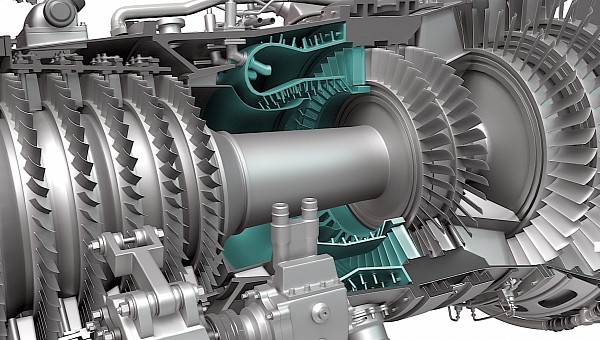Back in February of 2021, the American space agency announced the Hybrid Thermally Efficient Core (HyTEC) project. Unlike the things NASA usually does, HyTEC is not meant for space exploration, but for the world of aviation.
HyTEC is meant to come up with new engine designs that should “ensure the future of commercial flight is cleaner, more efficient, and sustainable.”
Back in 2021, NASA tied the knot with Honeywell to design an advanced low-pressure turbine for the powerplant. The goal is to achieve up to four times the power extraction levels of today’s top engines, while at the same time burning up to ten percent less fuel. This will be done by making the fan in front bigger to allow increased airflow and reducing the size of the core to cut consumption.
Now, we get word of Pratt & Whitney getting on board with HyTEC as well, this time to develop the engine’s combustor. That would be the place where fuel is added to compressed air and ignited to create the power the engine needs to do its thing.
For the task, the company received a $13.1 million contract from NASA, and it’ll match that with an equal amount from its own funds. The contract should run for the next two years or so.
The HyTEC project is meant to unfold for the next few years, and when it ends it should deliver an engine design capable of running on renewable fuels (or sustainable aviation fuel - SAF), but also capable of accommodating electrification for single-aisle commercial aircraft.
“In the next 30 years, the use of sustainable aviation fuel is the low-hanging fruit to make a major improvement in emissions coupled with all the efficiency improvements from the Sustainable Flight National Partnership,” said Tony Nerone, HyTEC project manager at NASA’s Glenn Research Center.
“In fact, sustainable aviation fuel usage is the largest contributor towards the U.S. Climate Action Plan’s 2050 carbon emissions goals.”
Back in 2021, NASA tied the knot with Honeywell to design an advanced low-pressure turbine for the powerplant. The goal is to achieve up to four times the power extraction levels of today’s top engines, while at the same time burning up to ten percent less fuel. This will be done by making the fan in front bigger to allow increased airflow and reducing the size of the core to cut consumption.
Now, we get word of Pratt & Whitney getting on board with HyTEC as well, this time to develop the engine’s combustor. That would be the place where fuel is added to compressed air and ignited to create the power the engine needs to do its thing.
For the task, the company received a $13.1 million contract from NASA, and it’ll match that with an equal amount from its own funds. The contract should run for the next two years or so.
The HyTEC project is meant to unfold for the next few years, and when it ends it should deliver an engine design capable of running on renewable fuels (or sustainable aviation fuel - SAF), but also capable of accommodating electrification for single-aisle commercial aircraft.
“In the next 30 years, the use of sustainable aviation fuel is the low-hanging fruit to make a major improvement in emissions coupled with all the efficiency improvements from the Sustainable Flight National Partnership,” said Tony Nerone, HyTEC project manager at NASA’s Glenn Research Center.
“In fact, sustainable aviation fuel usage is the largest contributor towards the U.S. Climate Action Plan’s 2050 carbon emissions goals.”





